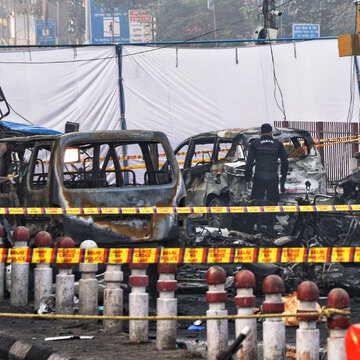Delhi on Tuesday woke up to a marginally better air, though conditions remained firmly in the ‘very poor’ zone. This improvement was recorded despite a spreading ash cloud from the Hayli Gubbi volcano in Ethiopia raising fresh queries over its likely impact on the region’s air quality.
According to CPCB's Sameer app, the city's overall AQI stood at 362 around 8 am. Although it is lower compared to Monday's 382 reading at the same time, the pollution levels stayed well above the mark considered harmful for prolonged exposure.
AQI across Delhi: Most stations in 'very poor' category
According to reports, data from 39 monitoring stations indicated that all but one recorded AQI levels below the ‘severe’ threshold of 400. Rohini continued to report the most polluted air, with an AQI of 416, the only station to breach the 400 mark. In contrast, Mandir Marg logged the best reading at 289, still categorised as ‘very poor’.
According to the CPCB-based standards, AQI in the range of 301-400 comes under the ‘very poor’ bracket, while 401–500 is marked as ‘severe’. Most areas of Delhi have hovered around these two categories for several days continuously, driven by seasonal weather patterns and local pollution sources.
Ethiopian volcanic ash reaches northwest India
Adding to Delhi's haze, meteorologists confirmed that a thick plume of volcanic ash from the eruption of Ethiopia's Hayli Gubbi volcano reached northwest India on Monday night. The volcano, erupting for the first time in thousands of years, sent ash high into the atmosphere and triggered concerns about possible fallout over northern India.
Also Read | ‘Bacche saans nahi lete kya?’: Delhiites stage massive clean air protest at India Gate, dozens detained
IMD: No significant improvement in AQI likely
However, senior officials in the IMD played down its possible impact on further deteriorating Delhi's pollution near ground level. According to Met department chief M. Mohapatra, the plume remains at the upper layers of the atmosphere, hence its influence at the surface is expected to be minimal.
He added that there may be a hazier sky for some hours as the plume drifts eastward. The main effect, according to him, would be a slight increase in minimum temperatures, similar to that of cloud cover, though the possibility of a serious hit to air quality remains uncertain but unlikely.











